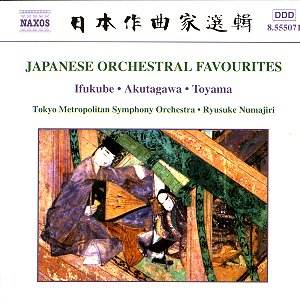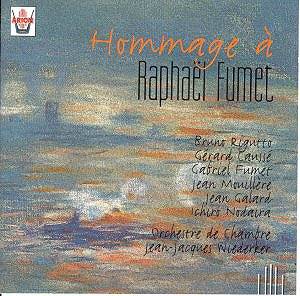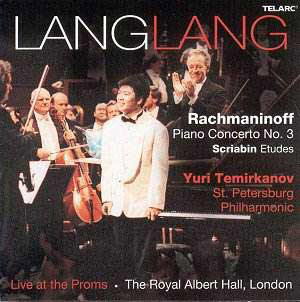 Composer: Various Japanese Composers
Composer: Various Japanese Composers
Works: Rhapsody for Orchestra (Yuzo Toyama), Etenraku (Hidemaro Konoye), Japanese Rhapsody (Akira Ifukube), Music for Symphony Orchestra (Yasushi Akutagawa), Kobiki-Uta (Kiyoshige Koyama), Threnody to Toki Op.12 (Takashi Yoshimatsu)
Performers: Tokyo Metropolitan Symphony Orchestra, Ryusuke Numajiri
Recording: Tokyo Metropolitan Art Space, July 2000
Label: Naxos
The Naxos release of Japanese Orchestral Favourites presents a compelling survey of mid-20th-century Japanese orchestral music, showcasing a rich tapestry woven from both traditional influences and Western compositional techniques. Each of the six works included reflects a distinct voice, illustrating the diverse approaches of their respective composers. For listeners, particularly those unfamiliar with the landscape of Japanese orchestral music, this compilation serves as an enlightening introduction to a repertoire often overshadowed in Western concert halls.
Ryusuke Numajiri leads the Tokyo Metropolitan Symphony Orchestra with a keen sense of clarity and purpose, allowing the intricate textures of each composition to emerge with vivid detail. Yuzo Toyama’s Rhapsody for Orchestra is a striking opener, blending traditional Japanese melodies with lush orchestration. The performance captures the work’s ebullient character, particularly in the spirited woodwind passages, which dance playfully over the strings, imbuing the piece with an infectious energy. Numajiri’s deft handling of dynamics reveals the subtleties of Toyama’s orchestration, notably in the contrasting lyrical passages that evoke a sense of introspection.
Hidemaro Konoye’s Etenraku, an arrangement of ancient gagaku tunes, stands out for its atmospheric depth. The orchestra’s timbral palette shines here, with the brass and strings achieving a rich resonance that mirrors the original intent of the traditional pieces while making them accessible to contemporary audiences. One cannot help but notice the meticulous use of silence and space throughout the work, a hallmark of Japanese aesthetics that Numajiri interprets with sensitivity.
Akira Ifukube’s Japanese Rhapsody, notable for its impressionistic qualities, resonates with the influences of Debussy and Roussel, yet remains firmly anchored in Japanese sensibilities. The Nocturne movement is a particular highlight, where the lush harmonies and delicate scoring create a dreamlike atmosphere. The orchestra’s execution is commendable, with the strings delivering a warm, enveloping sound, while the woodwinds provide a shimmering counterpoint. The transition to the Fêtes movement is handled seamlessly, showcasing Numajiri’s ability to maintain thematic coherence while shifting the emotional landscape dramatically.
Kiyoshige Koyama’s Kobiki-Uta introduces a more folkloric element through its variations on a wood-cutter’s song. The rhythmic imitation of the saw at the piece’s outset is both clever and engaging, setting a vivid scene. Here, the orchestra’s rhythmic precision is commendable, and the interplay between sections serves to enhance the narrative quality of the music. Yasushi Akutagawa’s Music for Symphony Orchestra, while less distinctive, provides a lively contrast with its tuneful melodies and playful Allegro, reminiscent of a lighter Kabalevsky.
Takashi Yoshimatsu’s Threnody to Toki Op.12 emerges as a poignant conclusion to the collection. Its orchestration is remarkably delicate, with a poignant use of piano and strings that evokes the fragile beauty of the toki, the endangered crested ibis. The performance captures the essence of the piece, allowing the listener to feel the weight of the environmental message it conveys. Numajiri’s interpretation brings forth the work’s emotional depth, particularly in the subtle shifts of dynamics that mirror the bird’s elusive flight.
This recording is notable not only for its technical precision but also for its thoughtful programming. The sound engineering is superb, with a balanced mix that allows for the nuanced textures of the orchestration to shine through. Naxos has managed to create a listening experience that feels both immersive and enlightening, making the listener acutely aware of the cultural context that informs these works.
The breadth of styles and emotional resonances captured in this collection provides a substantial argument for the inclusion of Japanese orchestral music in the larger canon of classical repertoire. The performances are vibrant and engaging, effectively bringing to life a wealth of musical ideas that merit wider recognition. This release sets a promising precedent for the forthcoming volumes in the series, which are sure to reveal even more of the rich musical heritage of Japan.



